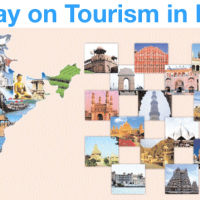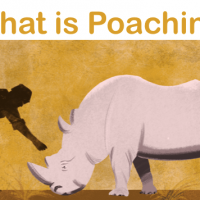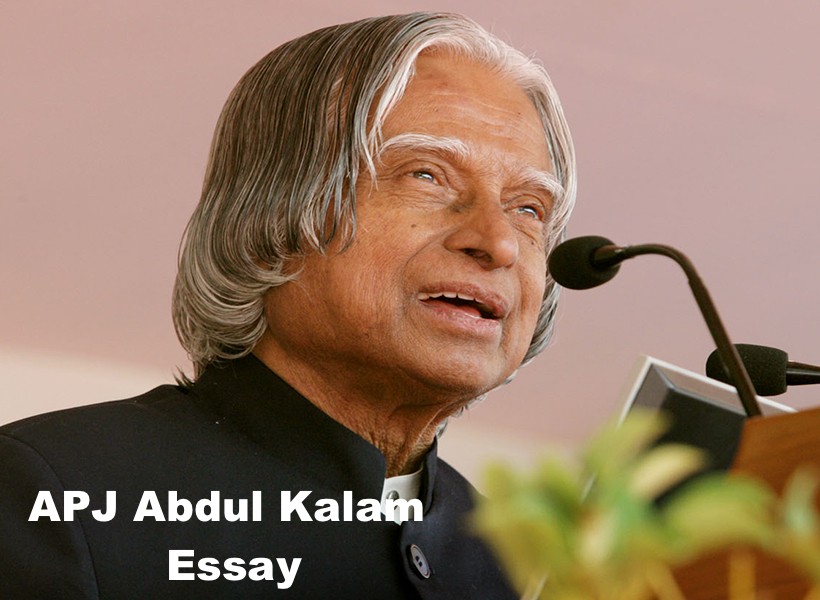Hello Friend This is special category for our small reader who study in school. If they looking for english essay for their school homework or any kind of english essay article then this special category might help you all guyz. in this article we will share Mahatma Gandhi Essay in English for class 1 , 2, 4,5 student . Initially we have published 300 word article for Mahatma Gandhi.

Mahatma Gandhi Essay
Mahatma Gandhi was born on 2nd October, 1869 at Porbandar in Gujarat. His full name was Mohandas Karam Chand Gandhi and people lovingly called him Bapu’. He is known as the father of nation”, He got his primary education in Rajkot. He was married at the age of thirteen with Kasturba.
After passing Metric examination he was sent to England to study law. After returning from England he started his career as a lawyer in Bombay. He went to South Africa to plead a case. He always believed in non-violence and truth. He worked for Hindu-Muslim.
unity and fought against the system of untouchability He led so many ‘Satyagraha’ and was sent to jail several times. In 1942, he started the ‘Quit India Movement’. Under his able leadership Our country got freedom on August 15, 1947. He was shot dead by Nathuram Godse on January 30, 1948.
Mahatma Gandhi Essay in English in 1000 word
Mohandas Karamchand Gandhi is the greatest leader that India has ever produced. He was born at Porbandar, a small coastal town in Kathi awar, Gujarat, on 02 October, 1869. He was the fourth and last child of his father’s fourth and last marriage. His father was the devan for about twenty-eight years in the States of Rajkot, Porbandar and Wankaner and was a renowned figure. His mother, Putlibai, was a good-natured patient and saintly ladyHe was sent to school at the age of seven. He was married to Kasturba at the age of twelve. He completed his matriculation in 1888 and went to England to become a barrister. He scrupulously observed the three vows he had given to his mother regarding abstinence from wine, women and meat.
He found it difficult to practise law when he returned to Bombay (now Mumbai) as he had not studied the Indian lawAt this time he went to South Africa to take part in a civil suit in 1893. He had gone there for one year only, but continued to stay there for another 21 years (1893-1914) with intermittent breaks in between. It was in South Africa that he at first tried his ideas of Satyagraha, though without much success.
Mahatma Gandhi returned to India in 1915. He was then initiated into politics by Gopal Krishna Gokhale. He established a Satyagraha Ashram on the banks of River Sabarmati. He wanted to take part in the Indian Independence Movement, so he travelled extensively to understand the In dian people
. He successfully led small, but important, movements in Champaran, Ahmedabad and Kheda to beget the poor workers their due Now he was fully active in politics In the First World War, Mahatma Gandhi Genuinely believed that self-government would be granted to India at the end of the war, so he co operated with the British, but his hopes were be lied. Rather, the Rowlatt Bill, 1919 was imposed.
A great tension was created and the things came to a tragic culmination at the Jallianwala Bagh. Mahatma Gandhi thought out the idea of complete break up from the British if the Rowlatt Act was not repealed.
The idea of non-cooperation was simple so it appealed to the masses. He promised to the masses if they non-cooperated with the British non-violently, the self-government would come within twelve monthsHe so emphatically conveyed the idea of non-cooperation to them that people took it on their personal level. In January 1922, he gave a weeks notice to Lord Reading of mass civil disobedience if government’s policy of repression was not changed. The Civil Disobedience Movement finally started on 1 February, 1922 in Bardoli.
The movement gained momentum but an unfortunate incident took place in Chauri Chaura where 22 policemen were burnt alive following their repressive mea SureS. Gandhiji called of the movement as it was to be a non-violent movement, despite opposition from the leaders.
He was sent to jail. Along side the independence movement, Mahatma Gandhi advocated and started constructive programmes of spinning and weaving khadi, prohibition, working for eradication of untouched ability and unity of the Hindus and the Muslims, so that social conditions could be improved.
In 1930, Mahatma Gandhi formulated an 11 point programme for Government’s acceptance, failing which the civil disobedience movement was to be launched. It included total prohibition reduction in revenue, amendment to the Arms Act, protection of textiles reservation of coastal shipping for Indians and abolition of salt tax. It was the last item on which he based his entire Civil Disobedience Movement.
The Salt Satyagraha started on 12 March 1930 when Gandhi started from his Sabarmati Ashram with 79 co-workers for Dandi on the coast of the Arabian SeaThis was the historic Dandi March and the beginning of the Civil Dis obedience Movement. As he treaded his path, hundreds and thousands of people joined him He broke the Salt Law by making salt from seawater on 06 April. Therefrom he proceeded to Dharsana to take possession of the salt ware house, but he was arrested on 5 May The movement went on non-violentlyHe was released in 1931 and took part in negotiations with Lord Irwin.
Later he sailed to England to take part in the Second Round Table Conference, but he came back a disappointed man. He resumed his movement again, but was arrested and kept in the Yarvada Prison
The Communal Award was published by the British Government in 1932. It made Mahatma Gandhi take a fast unto deathIt culminated into the Poona Pact in which the depressed classes were to get reserved seatsHe took another fast for 21 days for purification, at this he was re leased from prison Since the civil Disobey Movement had been officially withdrawn, he en gaged himself in social uplift and constructive programmes.
The Second World War broke out in 1939. The British Government declared India a party to the war without the consent of the Congress The Crisps Mission was sent from Britain, but it failed to meet the aspirations of the people since it did not promise self-government at the end of the war. On the other hand, Japan was nearing Gandhiji felt that the British should quit India to its fate even if it meant anarchy here.
On 08 August, 1942the AICC met at Bombay and passed the Quit India Resolution which proposed the commencement of a massive non violent struggle under Gandhiji’s leadership. He boldly declared, “We shall either free India or die in the attempt, we shall not live to see the perpetration of our slavery”He and several other leaders were arrestedProtests and violence erupted He toured the riot-hit areas from November, 1946 to March, 1947 facing danger to his life from religious fanatics.
He undertook fast unto death at the age of 78 years on 2 October to save Calcutta (now Kolkata) to pacify communal hatredHe broke his fast three days later when the leaders of different communities assured him in writing that Calcutta would remain riot free. India gained freedom on 15 August, 1947 amidst news of communal violence and anarchy besides bifurcation of the country into India and PakistanIt made him spend Independence Day fasting and spinning.
This great son of India, entitled Father of the Nation and Bapuwas shot dead on 30 January, 1948 by a fanatic called Nathuram Godse at Birla House. He fell to the ground with the words Hey Ram. Thus came the end of the glorious life of Mahatma Gandhi. We can never forget his achievements
Also Read:
- Essay on Global Warming in English
- APJ Abdul Kalam Essay in English
- Diwali Essay in English
- Essay on My Hobby in English
- Essay on Election in English
- Essay on Teacher in English
- Essay on Student in English
- Essay on Coolie in English
Mahatma Gandhi Essay in English in 500 word
Mahatma Gandhi is the greatest leader of India. He was the greatest politician as well as great saint. He was the messenger of truth and peace love and non-violenceHis great principles of Ahinsa and Truth have been appreciated all over the world. He Sacrificed his life for the sake of poor and needy We call him “Bapu, the father of our Nation This great Soul took birth at Porbandar in 1869 His father was the Dewan of the Porbandar State.
His mother was a religious lady Gandhi had a great impact of her other on his life. Gandhiji passed his metric exams from Rajkot. He went to England to study lawHe took his barrister degree there and returned after three years. Gandhiji practised as a barrister in Bombay High court, but he was a failure in this profession.
He left for South Africa in 1913 to plead the case of a firm named Dada Abdullah & Co During his stay he was very much hurted to see the behaviour of white towards the Indians. They were very badly treated. Gandhiji started Satyagraha Movement for the rights of Indians. After returning to India in 1915, he joined National Congress. He whole-heartedly joined the freedom movement.
He was soon famous for his bold and peaceful initiative at the Neel Satyagraha of Champaran district. HS started ‘Non-cooporation Movement’ in 1920 and Civil Disobedience Movement in 1930In 1942, he started the Quit India Movement. In 1930salt law by making salt from he broke the Seawater For all these efforts, he had to g to jail many times.
As a modern day saint, he was a firm believer in the powers of fasting and prayer He sacrificed his re on the altar of India’s freedom. He made great efforts to together . He was bring different communities very much against untouchability. This true incarnation peace of was assassinated On January 30, 1948 by Nathu Ram Goud During his last days, Gandhiji was not a very happy man. he witness the misfortunate partition or i can say he is the prime reason who allow jinnah for partition , as had to of the country into India and Pakistan. Now this prophet of brotherhood is sleeping eternally at Rajghat, New Delhi. His silence inspires all . of us to live for our country.
If you have question in mind that why Nathuram kill Mahatma Gandhi then please watch below video for all your question.
Also Read:
- How to Link Your Airtel Number to Aadhaar Card Online Registration
- How to Activate or Deactivate Airtel Missed Call Alert Service
- How to Activate Airtel DND Service Start Airtel DND Service
- How to Check Airtel offer Check Number Through USSD Code
- How to port Aircel number to Idea Airtel Jio BSNL Number
- How to port BSNL number to Idea Jio Vodafone BSNL Number
- How to port Vodafone number to Idea Airtel Jio BSNL Number
- How to port Jio number to Idea Airtel Vodafone BSNL Number
- How to Port Airtel number to Idea Jio Vodafone BSNL Number
- How to Port Idea number to Airtel Jio Vodafone BSNL Number





